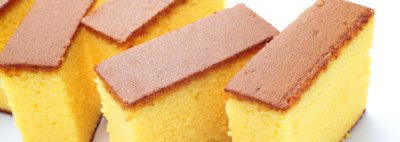
When you’re using an egg replacer, there are some important questions to ask. It depends what you want it to do or what you’re baking. Do you want to maintain structure? Is it adding emulsification properties? Do you need something to help with volume, binding, or texture? What other ingredient interactions do you have that impact your eggs?
Ok, got that. Now what?
Now you can pick your type of egg replacer. Here are a few kinds:
- Wheat protein isolate: helps build structure and provide aeration
- Soy or whey protein isolates: not only functions as an egg, but has some of the same nutritional value
- Fiber gels: works as an emulsifier and water binder
- Cyclodextrins: can replace 100% of eggs in formulas, while keeping the same quality and improving batter aeration and the fat stability.
Once you find the type of replacer, be sure to do some research into whether it is a full or partial replacer. Also, what the cost difference is. You should find many come at half the cost of real eggs.
But why bake with an egg replacer?
While eggs do add nutrition to products, there are some aspects consumers are trying to avoid. For example, eggs may pose some health issues because of high cholesterol content and may contain antibiotics and hormones that are potentially used during the growing of poultry. Furthermore, egg proteins are not suitable for vegetarian/vegan diets. With the ever-increasing demand for egg products, the egg is vulnerable to price fluctuations and even commands a premium price nowadays.

